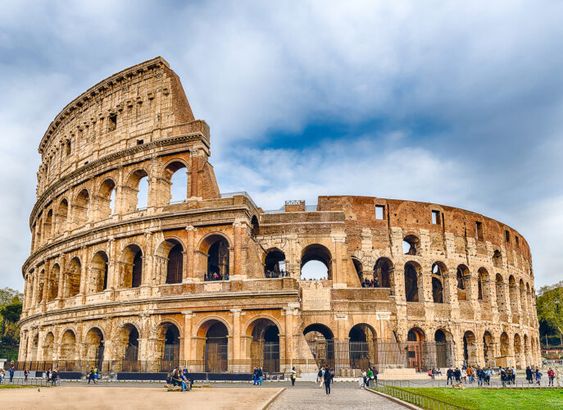The Mysterious Charm of the Aventine Keyhole: Rome’s Hidden Gem
Introduction
Rome is a city brimming with historical landmarks and hidden treasures, but one of its most enchanting secrets is the Aventine Keyhole. This small, unassuming keyhole offers a unique perspective that captivates both locals and tourists alike. Situated on the Aventine Hill, it provides a perfectly framed view of St. Peter’s Basilica, blending history, architecture, and a touch of mystery into a single, unforgettable experience.
History of the Aventine Hill
The Aventine Hill, one of Rome’s seven hills, has a rich history dating back to ancient times. Originally a residential area for the plebeians, it became a significant part of Rome’s urban development. Over the centuries, the hill has hosted various religious and public buildings, maintaining its importance through the ages.
The Priory of the Knights of Malta
At the heart of the Aventine Hill lies the Priory of the Knights of Malta. This ancient order, with roots in the medieval Crusades, established their headquarters here in the 12th century. The priory itself is a remarkable example of Romanesque architecture, featuring a grand entrance and lush gardens. But its most intriguing feature is the keyhole in the priory’s door, which offers a stunning, almost magical view.
The Fascinating Story of the Keyhole
So how did this keyhole become a renowned tourist attraction? It’s all about the view. When you peer through this unassuming aperture, you’re greeted with a perfectly aligned vista of St. Peter’s Basilica. This alignment wasn’t coincidental but rather a meticulously planned design, likely intended to impress and surprise visitors. Over time, this view has become a symbol of Rome’s hidden wonders, drawing curious travelers from around the globe.
A Peek Through the Keyhole: What You See
Looking through the Aventine Keyhole is like looking into another world. The keyhole frames St. Peter’s Basilica, surrounded by the well-kept gardens of the priory. This sight is especially striking at dusk, when the setting sun bathes the scene in a warm, golden light. The careful alignment and the enchanting view make it feel like a secret, just for you.
Architectural Marvels of the Aventine Hill
The Aventine Hill is more than just the keyhole; it’s home to a wealth of architectural treasures. Notable among these are the ancient churches such as Santa Sabina and Sant’Anselmo. The hill’s lush gardens, like the Orange Garden (Giardino degli Aranci), offer serene spots to relax and take in panoramic views of the city. Each of these sites contributes to the hill’s charm and historical significance.
Visiting the Aventine Keyhole
Getting to the Aventine Keyhole is part of the adventure. Located in a peaceful area away from the bustling tourist hotspots, it offers a quiet respite. The best time to visit is early morning or late afternoon to avoid crowds and enjoy the view in natural light. Bring a camera, as you’ll want to capture the moment!
The Cultural Impact of the Aventine Keyhole
The Aventine Keyhole has left its mark on culture and art. It’s mentioned in numerous travel guides, blogs, and even literature. Its unique view has inspired countless photographs and paintings, making it a beloved symbol of Rome’s hidden beauty. Local traditions often incorporate visits to the keyhole, especially during festivals and special events.
Personal Experiences: What Visitors Say
Visitors rave about the Aventine Keyhole, often describing it as a highlight of their trip to Rome. Many share their experiences on social media, showcasing stunning photos and heartfelt testimonials. The keyhole’s ability to surprise and delight makes it a cherished memory for many.
Photography Tips for the Aventine Keyhole
Capturing the perfect shot of the view through the Aventine Keyhole requires some skill. Use a camera with a good zoom lens or a smartphone with a high-resolution camera. Position yourself directly in front of the keyhole and adjust your focus to capture the distant St. Peter’s Basilica clearly. Editing tools can enhance the colors and clarity of your shot, making it even more striking.
Nearby Attractions on the Aventine Hill
While on the Aventine Hill, there are several other attractions you shouldn’t miss. The Orange Garden offers breathtaking views of Rome, especially at sunset. The ancient church of Santa Sabina is renowned for its beautiful doors and serene interior. For those interested in ancient Roman history, the Baths of Caracalla are just a short walk away.
Comparing the Aventine Keyhole to Other Hidden Views in Rome
Rome is full of hidden gems, but the Aventine Keyhole stands out. Other noteworthy views include the secret terrace in the Vatican Gardens and the panoramic views from Janiculum Hill. However, the keyhole’s unique framing of St. Peter’s Basilica and its historical context make it unparalleled.
The Role of the Keyhole in Roman Festivals and Events
The Aventine Keyhole often plays a role in local festivals and events. During the Feast of St. Peter and St. Paul, the view through the keyhole is a special attraction. Historical reenactments sometimes include the Knights of Malta, adding to the allure of the location.

The Symbolism of the Aventine Keyhole
The Aventine Keyhole is rich in symbolism. It represents a portal to Rome’s past, framing a view that connects the ancient and the modern. The precise alignment with St. Peter’s Basilica symbolizes the harmony between the secular and the sacred in Roman culture. This duality is a recurring theme in Roman history and art.
Conclusion
The Aventine Keyhole is more than just a hole in a door; it’s a window into Rome’s soul. This unique attraction offers a blend of history, architecture, and natural beauty that leaves a lasting impression on all who visit. Whether you’re a seasoned traveler or a first-time visitor, peering through the keyhole is an experience you won’t soon forget.
FAQs
What is the Aventine Keyhole? The Aventine Keyhole is a small keyhole in the door of the Priory of the Knights of Malta on the Aventine Hill in Rome. It offers a perfectly framed view of St. Peter’s Basilica.
How do you get to the Aventine Keyhole? The Aventine Keyhole is located on the Aventine Hill in Rome. It’s accessible by walking from the Circus Maximus metro station or by taking a short taxi ride from the city center.
What can you see through the Aventine Keyhole? Through the Aventine Keyhole, you can see a beautifully framed view of St. Peter’s Basilica, surrounded by the gardens of the priory.
Why is the Aventine Keyhole significant? The Aventine Keyhole is significant because of its unique view, historical context, and the careful alignment that creates a stunning visual experience. It symbolizes Rome’s hidden treasures and architectural ingenuity.
Are there other attractions near the Aventine Keyhole? Yes, nearby attractions include the Orange Garden (Giardino degli Aranci), the ancient church of Santa Sabina, and the Baths of Caracalla. The Aventine Hill itself is a beautiful area to explore with several historical sites and scenic views.















 One of the most iconic representations of Roman engineering and amusement is the Colosseum. Originally constructed between the years 70 and 80 AD, it was the site of simulated naval battles, animal hunts, and gladiatorial bouts that drew audiences of up to 80,000.
One of the most iconic representations of Roman engineering and amusement is the Colosseum. Originally constructed between the years 70 and 80 AD, it was the site of simulated naval battles, animal hunts, and gladiatorial bouts that drew audiences of up to 80,000.








